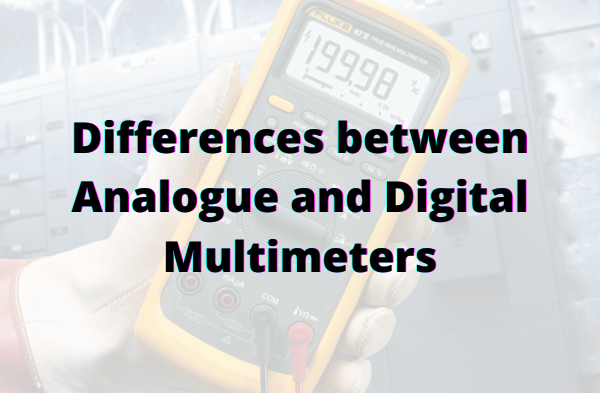Differences between Analogue and Digital Multimeters
Multimeters are one of the most commonly used diagnostic tools in testing electronic equipment. They have an important role in testing the electronic and electrical systems at your commercial premises. Multimeters are used to test circuits and measure basic circuit parameters like voltage, current, and resistance among others. You can find a great range at RS Components.
But what are the main differences between an analogue multimeter and a digital multimeter? Let us take a look.
Display and reading
The most significant difference between the two is in the display. An analogue multimeter uses a deflection needle to show the measuring values printed on a scale, while a digital multimeter shows the results as a digital display in numeric form on a screen.
Being an analogue display, the analogue multimeter is able to accept only one input signal value per operation. While the digital multimeter has the ability to accept multiple input signals and the user can choose the desired one by adjusting the display.
Functions
Analogue multimeters can be used to measure only the basic circuit parameters like current (in Amperes), Voltage (in Volts) and Resistance (in Ohms). For the same reason, analogue multimeters are also known as AVO meters.
On the other hand, on top of measuring the basic electrical quantities, digital multimeters are also used to measure additional parameters like capacitance, inductance and impedance. The digital variant is also used to test different electronic components such as diodes, transistors and capacitors.
Internal circuit
The internal construction of an analogue multimeter includes a permanent magnet moving coil (Galvanometer), which in turn is a combination of resistors and trimmers that are used to measure the current. On the other hand, digital multimeters have a more complex construction including components like an LCD, ADC, comparator and encoder.
Working principle
Analogue multimeters measure the current using a Galvanometer, while the digital option measures voltage using an ADC – Analogue to Digital Converter. A power supply is required to use a digital multimeter for measurements, while an analogue variant needs only power in case of resistance measurement; power supply is not required to check current and voltage.
Accuracy
The accuracy of an analogue multimeter is comparatively low in comparison to the digital multimeter. This can be due to incorrect pointer readings and parallax errors, i.e., viewing the pointer of an analogue multimeter from another angle and misinterpreting the measurement. Digital multimeters generate more accurate results.
Calibration and range
Analogue multimeters should be calibrated manually, while digital multimeters are calibrated automatically before taking any measurement. Similarly, the range has to be set manually using a knob for different measuring quantities in an analogue multimeter, while setting the range is automatic in a digital multimeter.
Electric noise
Analogue multimeters show less susceptibility towards electric noise while digital multimeters are more susceptible.
Analogue and digital multimeters have an extensive role in the maintenance of electronic circuits as they can measure vital parameters and keep your commercial equipment safe.





